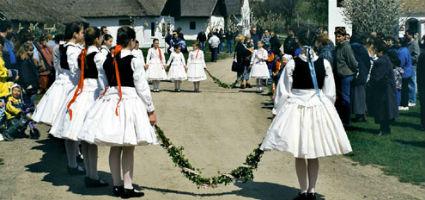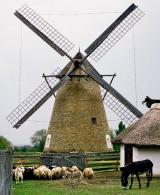
The Great Hungarian Plain is generally considered as the typical Hungarian region. The best known Hungarian words all over the world – puszta, csárda, betyár, gulyás, paprika – are also connected here. Specific natural formations of this territory are the bleak flatland with its alkaline soil, the mirage, the sand drift, or the shallow waters and thick reeds providing home for a colourful avifauna.

|

Bakony evokes hills covered with woods, while Balaton-Uplands recall gentle slopes rising above the glistening water and interesting volcanic shapes planted with grapes and press-houses. In the villages whitewashed, adorned gables, vaulted porches catches the eyes of the visitors together with colourful stone walls emerging from beneath the crumbling mortar.

|
|
|
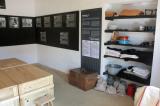
Keresztély, Lőrinc, János, Anna or Teréz? Who are they? Where are they from? What happened to them and their family after WWII? Our permanent exhibitio is to remember the history of the house in Hidas where a Swabian family used to live in the past.
The exhibition is to remember the substitution of Swabian families in the village of Hidas after WWII, with all the pain and difficulties of the events.
Entering the rooms, the visitors find situation cards which direct them to take on the role of someone who once used to live there. Walking on, the visitors may identify more and more with their character. They can find out about what kind of food their character used to have, how it was dressed, and finally, all the fear, chaos of the times when she or he had to leave his or her home.
So, who was Jusztina, Aladár, Lajos? Learn more about them!

|
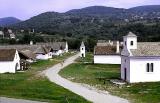
The two rows of houses facing each other in the regional unit are definitely different: on one side there are stately brick buildings while on the other humble, earthen walled, thatched or reed covered ones can be seen. The exhibition's aim is to reflect the ethnographic versatility of Kisalföld through its traditions and changing.

|
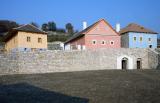
Upland is the historical name for the territory of the northern mountain range. The market towns, emerging in the region between the rivers Ipoly and Bodrog are the characteristic settlements of the area. Their privileged position (rights for having markets, electing magistrates, free options to move and inherit) differentiated them from the serfs of the neighbouring villages.

|
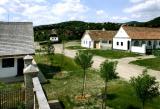
Southern Transdanubia, i.e. Baranya, Somogy, Tolna and Zala Counties used to be a densely populated area, strewn by small villages, the greater part of which lost its population during the Turkish occupation. Since the 16th century Serbians, Catholic Serbians, Croatians and Hungarians have coexisted in this region. The tradition of busójárás, having been a famous carnival custom for a long time in Mohács, is of Croatian origin.

|
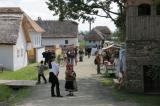
The North-Hungarian Village Region was ceremoniously opened on 25 June 2010. It is to deal with the traditional architecture and lifestyle in the Ipoly and Bodrog Interfluve area. The setting consists of 12 houses and 26 outbuildings, with 5000 original artefacts.

|
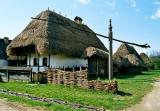
The Upper-Tisza regional unit represents the folk architecture of the inhabitants living in the north-eastern corner of the country, a territory wedged between Slovakia, the Ukraine and Romania.

|
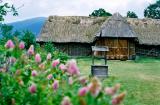
The regional unit presents the traditional vernacular peasant culture of Őrség in Vas County, Göcsej and Hetés in Zala County.

|
|
